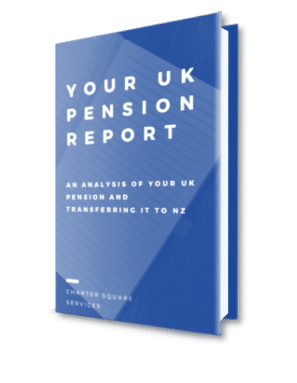UK tax: The Overseas Transfer Charge (OTC) – 25%
On 9 March 2017 the UK government introduced an Overseas Transfer Charge (“OTC”) which applies to pension transfers to QROPS unless one of the following conditions is met:
- The transfer is to a QROPS scheme that is based in the country that the transferring member lives in, or
- The source of the funds is originally from a UK to QROPS pension transfer that occurred prior to 9 March 2017, or
- The transfer is from a non-UK registered pension scheme and it is the first transfer out
The OTC is 25% of the value of the pension transfer and it is not an income tax so is not caught by any double tax treaty. This means that if you pay the overseas transfer charge you cannot get tax relief on that payment in any other country.
Some examples of where the OTC does not apply:
New Zealand resident transferring to NZ QROPS
Someone living in New Zealand transferring a UK pension to a New Zealand QROPS.
However, the important point for the member here is that the OTC has a five year life in this instance. Meaning that if the member then leaves New Zealand within five complete and consecutive UK tax years of the transfer the OTC will apply.
Non-NZ resident transferring foreign QROPS to NZ QROPS
If someone has transferred their UK pension to a QROPS in, say, Malta or Gibraltar prior to 9 March 2017 you can transfer to a NZ QROPS with no OTC.
Overseas resident transferring international pension plan to NZ QROPS
If someone has an international pension plan in the Channel Islands, for example, they can transfer that to a NZ QROPS without the OTC applying. However, any subsequent onward transfer to another QROPS in country that the person was not living in would attract the OTC.
UK tax: Lifetime Allowance (LTA) tax – 25%
Because UK pensions receive tax relief on contributions and there is no tax on the growth inside the pension scheme they are a very tax efficient savings vehicle. The HMRC have, however, capped the tax efficiency by introducing a Lifetime Allowance (LTA). The LTA means that when savings are withdrawn or transferred out of a UK pension scheme that are in excess of the LTA will pay tax.
While the mechanics of assessing a pension against the LTA are complex here are the basic facts that you need to know in respect of a pension transfer:
- A pension transfer is a benefit crystallisation event (BCE) and therefore must be assessed against the LTA
- If you do not have sufficient available LTA remaining you will pay a 25% tax on the transfer for the amount that is above the LTA
- The current LTA is £1.073m
- If you stopped contributing into your UK pension before 6 April 2016 you may be able to get an enhanced LTA
Some of the quirks of the lifetime allowance are:
- Once a pension is transferred to a QROPS any future growth of the funds above the LTA will have no UK impact. So if you are close to the LTA in the UK a transfer to a QROPS can be used as a tax mitigation strategy
- The transfer value of a Defined Benefit pension is not the same value that will be assessed if you take the pension from the UK scheme. If you opt to take a UK defined benefit pension as a pension the value for assessment against the LTA is 20 times the annual benefits. However, if you transfer a defined benefit pension scheme it is the transfer value that is assessed against the LTA
- The LTA is assessed separately from the OTC and therefore you can end up paying both taxes on the same transfer
The assessment of the LTA and its impact are a complex area and we recommend you seek professional advice to understand these before proceeding with any pension transfer.
NZ tax on pension transfers
New Zealand has a system of taxation on pension transfers into New Zealand superannuation schemes. The system has the following characteristics:
- If you are not tax resident of NZ, or been tax resident in NZ less than 4 years after acquiring the pension then any pension transfer is tax free (please note that this is based on tax residency and not immigration residency)
- If you fall outside of the above criteria then you must calculate tax on your pension transfer. You can use either the “Schedule Method” or the “Formula Method” to calculate your taxable income on a pension transfer – the results under each method can be very different
- You can the method that gives you the lowest amount of taxable income – it is important to therefore understand both methods
- Once you have determined your taxable income then you must input this into your New Zealand tax return in the tax year that the pension transfer arrives
- The amount of tax that you pay will therefore depend on how the income declared from the pension transfer effects your total taxable income in New Zealand, so you could be taxed on the income at a rate from 10.5% to 39%
- Also note that the transfer income returned in your tax return will effect any working for family tax credits that you might be receiving
The “Schedule Method”
The “Schedule Method” is the simplest of the two methods to calculate your taxable income. Once you are outside your four year window (outline above) you simply count the number of tax year ends that you have been in New Zealand.
You then match the number against a predetermined table that gives a percentage of the transfer value that you have to declare as taxable income. The longer you have been in New Zealand the larger the % you need to declare under the “Schedule Method”. It can get up to declaring 100% of the transfer value as taxable income. Remember though that is not the same as 100% tax, instead that is the income level that you must then pay tax on.

The “Formula Method”
The “Formula Method” involves a more complicated set of equations, a whole lot more background information and a two page worked example by the IRD to explain it.
Boiling it down into it’s simplest terms, if the value of your foreign pension, in New Zealand dollar terms, was worth more four years after you arrived in New Zealand than when you transferred it to New Zealand you will have NO tax on pension transfers to New Zealand.
The “Formula Method” can be relevant if at the time your four years expired the exchange rates were considerably higher than they are now. If say at the end of your four year period exchange rates were $3 to the pound and they are now $2 to the pound, then the New Zealand dollar value of your investments might not have increased as much.
It is crucial when assessing your UK pension and whether you transfer it that you look at the right tax method to use. Failure to do so could lead to a larger tax bill than you should have. We recommend that you seek professional guidance in this area to understand how these taxes will apply to you.

